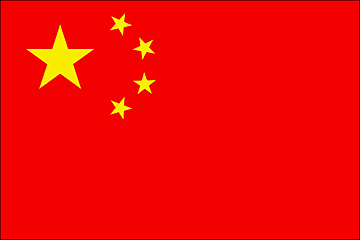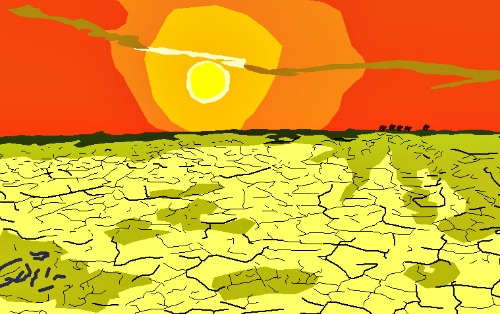- Air Homepage
- Environment in Asia
- China Drought
Understanding the China Drought and Climate Change
Find out more about world weather.
Can you tell me what has caused the China drought? Despite China's increasing role in carbon emissions and global warming, it's less known that it's home to many signs of climate change. Water issues, specifically drought and desertification, can be indicators of climate change in China. What's Here?
Find out why China's glaciers are shrinking and deserts are growing. Learn about its global impact as the biggest carbon emitter. See why Western countries need to engage China on climate change. Support renewables, share expertise, and work on global agreements.
Discover China's Great Green Wall project. Discover its progress, challenges, and effects on the environment.
Find out how climate change is affecting China's drought. Find out how it affects water, agriculture, and rivers. Check out China's soil improvement, reduced overgrazing, and desert combat. Find out how it protects the environment.
Get to know China's environmental landscape, its progress, and its challenges. Learn about its environmental impact. Celebrate China's ambitious environmental goals, including desertification and climate change.
China's glaciers are shrinking, but its deserts are growing. It's estimated that the Gobi Desert added 950 to 1000 square miles per year to China's desert land at one point. Beijing is getting more sandstorms because the Gobi Desert is encroaching. Since 2000, a new desert has developed on the edge of the Qinghai-Tibet Plateau.
Why the concern in America? As the world's biggest greenhouse gas emitter, China accounts for approximately 28% of global carbon dioxide emissions in 2019. Therefore, China's climate policies and actions have a big impact on global climate change mitigation.
Climate change affects everyone, no matter where they live. Sea levels are rising, extreme weather is happening, and ecosystems are being disrupted. Global stability can be affected by these impacts, including economic, social, and environmental impacts.
In addition to being the world's largest emitter, China is also a major economic and geopolitical player, with a big say in international climate change policies. Because of that, its climate change actions can ripple around the world.
It's in the West's interest to engage with China on climate change and come up with solutions that will benefit both countries. Among the things we could do is support China's transition to renewable energy and reduce emissions, share knowledge and expertise, and collaborate on international agreements and policies.
Have you ever seen the rain, they might wonder sometimes ...
...and the Youtube channel homepage is at https://www.youtube.com/user/radiosonde1/featured
How are they helping the China drought?
To stop the desert from encroaching, the Chinese government started a "Great Wall of Green" project some time ago. The first phase is almost done, rebuilding 9 million acres of forest wiped out by past droughts. The $8 billion price tag shows how serious the Chinese are about desertification.
A bit more about the Great Green Wall project in China: It's a massive afforestation project started by the Chinese government in 1978. By planting trees and vegetation in desert areas, the project aims to combat desertification and soil erosion in northern China.
The project covers about 66,000 square kilometers and involves planting trees, shrubs, grasses, and crops. The project has been credited with reducing sandstorm frequency and severity in northern China and improving quality of life.
However, the project has also faced some challenges, like inadequate funding and maintaining the plants. Even with these challenges, the Chinese government is committed to the project and plans to expand it. In September 2021, the Chinese government reported that the Great Green Wall project had planted more than 100 billion trees since its inception.
According to a UN report, the project has also helped reduce desertification in China and improve people's livelihoods. China wants to increase forest coverage to 26% by 2035, up from 22.96% in 2020.
There have also been concerns about the quality of the trees being planted, since some species aren't native to the region and might not be able to survive. By using native plants and improving the soil, the Chinese government is addressing these concerns.
Anyway, kudos to them.
China drought conditions and Climate change
China's regional dry weather is still a problem. For instance, unseasonably warm weather and a China drought left 300,000 people without water in 2007. In the next year, the Yangtze area suffered its worst drought in a decade, causing the river to drop to a level where dozens of river transports got stranded.
Despite the buildup of the Three Gorges Dam reservoir, the lack of rain and other climate change-driven conditions worsened the situation. A drought hit eight provinces in 2009, destroying crops and leaving 4 million people without water.
Dams and irrigation projects have all but stopped the Yellow River, which contributes to much of China's agricultural productivity. China's drought is threatening to dry up the entire river valley. For 230 days in 1997, the Yellow River's lower reaches were blocked. It all started in the late 1980s and early 1990s, and there hasn't been much improvement since then.
China has continued afforestation efforts, improved soil quality, and reduced overgrazing in more recent years to combat desertification. There's been some progress, but it's still tough.
The Chinese government announced a plan to boost vegetation in the country's dry regions and fight desertification in March 2021. It involves planting trees, grass, and other vegetation on around 100,000 square kilometers of land per year, with the goal of covering 40% of the country's territory by 2050.
Since China is a big country with a variety of climates and environmental conditions, the situation can vary from region to region. With that in mind, various environmental problems in China, including drought, are regularly addressed by the Chinese government.
These plans might be seen as cynical, which isn't surprising given China's history of corruption, and its often indifferent implementation of environmental protection measures. The Great Wall of Green shows the government takes desertification seriously at least. It'll be the biggest environmental plan ever.
Again, congrats. You're making great progress.
Go back from China Drought to China Air Pollution now.
Search this site for more information now.
Drought in China: How did it affect the country?
China has seen some severly dry weather, likely climate change linked to global warming. How has the dry air and China drought changed inhabitants' lifestyles?
Do you have concerns about air pollution in your area??
Perhaps modelling air pollution will provide the answers to your question.
That is what I do on a full-time basis. Find out if it is necessary for your project.
Have your Say...
on the StuffintheAir facebook page
Other topics listed in these guides:
The Stuff in the Air Site Map
And,
Thank you to my research and writing assistants, ChatGPT and WordTune, as well as Wombo and others for the images.
GPT-4, OpenAI's large-scale language generation model (and others provided by Google and Meta), helped generate this text. As soon as draft language is generated, the author reviews, edits, and revises it to their own liking and is responsible for the content.





New! Comments
Do you like what you see here? Please let us know in the box below.